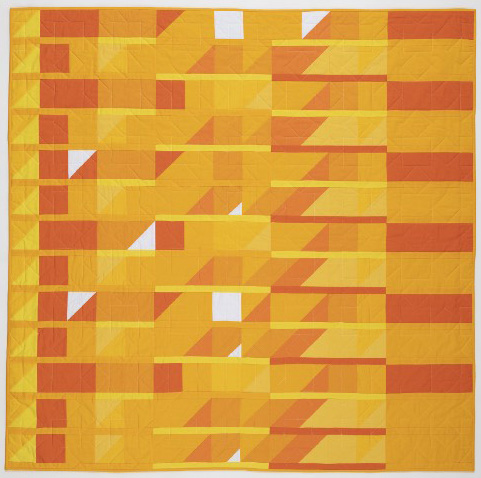
Eliza Hardy Jones
Song Quilts
April 14 - Feb 6, 2020

How can the ephemeral, short-lived experience of a musical performance be expressed in a tangible, enduring artform?
Musician and quiltmaker Eliza Hardy Jones explores this question in her Song Quilts project. Jones traveled across the U.S. and Northwest Russia recording folk songs sung by women, which she then transcribed into written music. Next, she developed a notation method that translates pitch—the highness or lowness of a sound—into color, and rhythm into shape. The resulting quilts are “read” from top left to bottom right. Jones selected predominant colors and quilting patterns to reflect her impressions of the song, the singer, and the experience of sharing music.
With each quilt, Jones materialized the women’s voices as they sang to preserve their communities’ traditions and identity.
Listen to each quilt’s song below by clicking the "Works in the Exhibition" tab.
Click here for a short virtual, animated tour of the gallery.